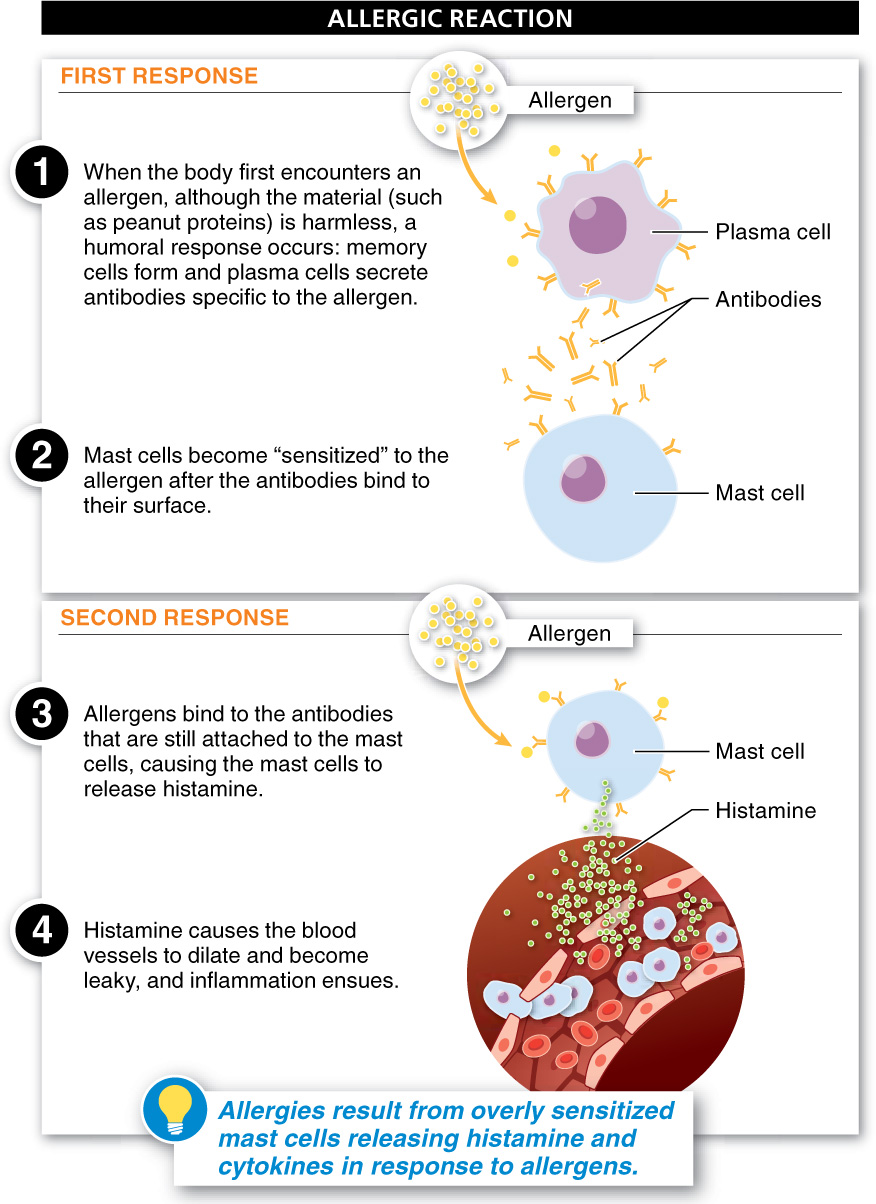26.13 Allergies are an inappropriate immune response to a harmless substance.
A three-


In discussing antibodies earlier in the chapter, we did not focus on the groups of antibodies that differ in their constant (heavy) region at the base of the “Y.” There are five classes of antibodies, differing in their chemical structure in this region. When antibodies of one of these classes bind to mast cells (the white blood cells found in tissues), they cause the mast cells to release histamine and cytokines, both of which cause local blood vessels to become dilated and leaky (as we’ve seen, standard parts of the inflammatory response), and recruit other immune cells to the site.
This mast cell-
The effect of different allergens reflects which particular mast cells have been exposed to the allergen and thus activated. Most allergic reactions occur in the digestive or respiratory tracts, because this is where the body first encounters an eaten or inhaled allergen. Allergic reactions associated with food often lead to vomiting or diarrhea, but can also lead to hives and other symptoms if the allergen enters the bloodstream. Respiratory allergens, such as pollen and dust, can cause a runny nose and teary eyes (“hay fever”) in the upper respiratory tract, or can result in asthma, a chronic inflammatory disease of the lower respiratory tract that causes wheezing, coughing, and shortness of breath.
1073
Taking an antihistamine can alleviate some allergies, as these medicines block the inflammatory effects of histamine. Other medicines block mast cells from releasing histamine. Steroids are prescribed for more severe allergies. Steroids block the production of the chemicals released from immune cells, thus preventing the migration of more inflammatory cells, such as macrophages and neutrophils, to the site of inflammation. Additionally, steroids can block the killing ability of these phagocytes, resulting in less damage to the inflamed tissue.
An individual with a severe allergic response may experience anaphylactic shock, a life-
A common method of testing for allergies is called skin allergy testing, in which microscopic amounts of one or more potential allergens are injected under the skin—
TAKE-HOME MESSAGE 26.13
In individuals who are sensitive, an allergen induces a humoral response in which one class of antibodies binds to and activates mast cells. With a second exposure to the allergen, activated mast cells release histamine and other chemicals, resulting in allergy-
What is anaphylactic shock?
1074